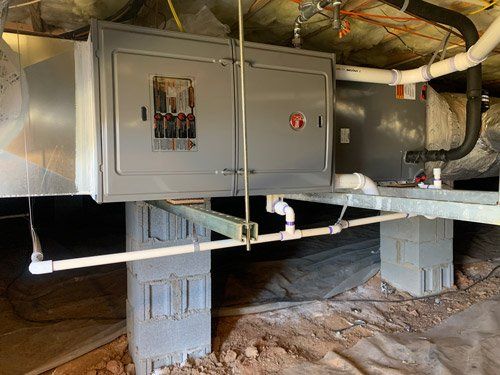The Ultimate Overview to Furnace Setup for a Cozy Home
Furnace setup is an essential element of preserving a comfortable home setting, particularly during the cooler months. As you take into consideration these elements, the question continues to be: what actions can you take to ensure your heater serves you well for years to come?
Types of Heaters

Gas furnaces are one of the most usual choice because of their performance and reduced functional costs. They use all-natural gas or gas, providing quick heating and regular efficiency, making them perfect for colder climates.
Electric furnaces, while typically less complicated to mount and maintain, tend to have higher operational expenses. They are usually favored in areas where gas service is not available or for homes with existing electric facilities.
Oil heaters, though much less common today, remain a practical choice in particular areas. They melt home heating oil, which can be useful throughout colder months, but their reliance on oil delivery positions prospective difficulties.
Furthermore, there are high-efficiency designs offered across these types, which can substantially reduce power intake and utility bills - furnace installation. Ultimately, comprehending these heating system types will assist property owners choose a system that straightens with their heating needs, spending plan, and power choices
Selecting the Right Size
Picking the ideal dimension for a heating system is important to making certain ideal performance and energy performance. A small heating system will struggle to keep comfy temperatures throughout the cool months, causing boosted deterioration, higher power expenses, and prospective system failing. Alternatively, a large furnace might cycle on and off as well frequently, leading to inefficient heating and uneven temperature circulation within the home.
To figure out the appropriate heater size, an estimation understood as the Manual J lots calculation need to be carried out. This procedure assesses numerous elements, consisting of the square video footage of the home, insulation degrees, window dimensions, and local climate problems. This extensive evaluation guarantees that the heater meets the certain home heating demands of the room.

Setup Process Summary
In terms of products, you will certainly need ductwork, insulation, and sealing tape to make certain optimum air flow and energy efficiency - furnace installation. It is additionally crucial to have a new furnace filter on hand, in addition to venting materials, such as PVC pipeline or metal flue, depending on the kind of heating system being set up
Safety tools, including handwear covers, safety glasses, and a face mask, is also critical to shield against dust and debris during setup. Having all these tools and products readily offered not only streamlines the procedure but additionally improves the safety and security and efficiency of the furnace installment.
Maintenance Tips for Long Life
To guarantee the long life of your heating system, it is important to apply a routine upkeep schedule that resolves essential website here parts of the system. Start by changing or cleaning the air filter each to 3 months, as a blocked filter can limit airflow and reduce efficiency. Furthermore, check and clean the blower assembly to avoid dust buildup that can hinder efficiency.
Following, check the thermostat settings and rectify if necessary to make certain accurate temperature law. Inspect the ductwork for leaks or clogs, as this can lead to energy loss and irregular heating. Routinely lube the electric motor and bearings according to the producer's referrals to minimize deterioration.
Professional evaluations must occur every year, where a certified specialist can analyze the furnace's general problem, look for gas leaks, and make sure that safety attributes are working appropriately. Ultimately, consider installing a programmable thermostat to optimize energy usage and preserve constant home temperature levels. By taking on these upkeep techniques, you can enhance your heating system's efficiency, expand its life-span, and inevitably appreciate a comfortable and comfortable home environment.
Conclusion
